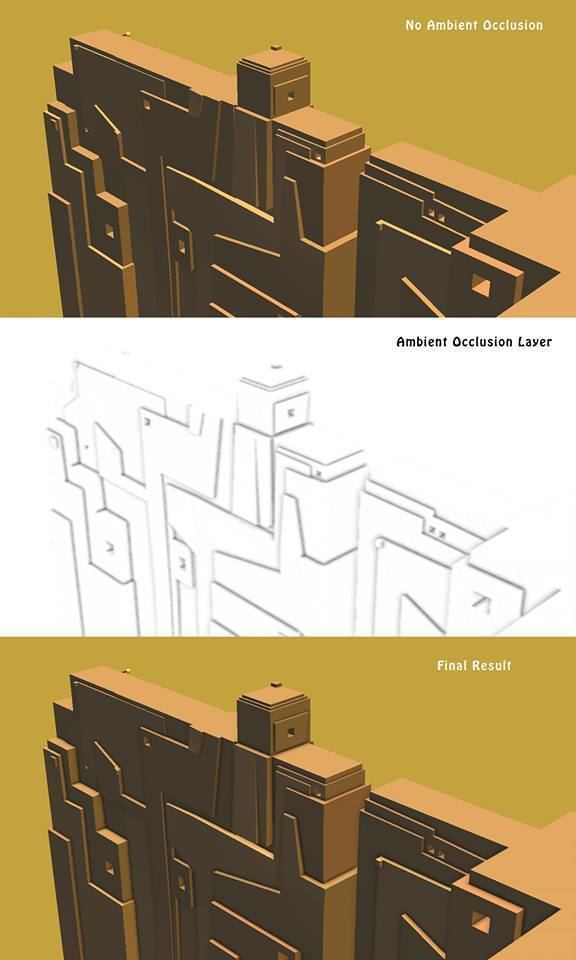 | ||
In computer graphics, ambient occlusion is a shading and rendering technique used to calculate how exposed each point in a scene is to ambient lighting. The interior of a tube is typically more occluded (and hence darker) than the exposed outer surfaces, and the deeper you go inside the tube, the more occluded (and darker) the lighting becomes. Ambient occlusion can be seen as an accessibility value that is calculated for each surface point. In scenes with open sky this is done by estimating the amount of visible sky for each point, while in indoor environments only objects within a certain radius are taken into account and the walls are assumed to be the origin of the ambient light. The result is a diffuse, non-directional shading effect that casts no clear shadows but that darkens enclosed and sheltered areas and can affect the rendered image's overall tone. It is often used as a post-processing effect.
Contents
Unlike local methods such as Phong shading, ambient occlusion is a global method, meaning that the illumination at each point is a function of other geometry in the scene. However, it is a very crude approximation to full global illumination. The appearance achieved by ambient occlusion alone is similar to the way an object might appear on an overcast day.
Implementation
In real-time applications, such as computer games, Screen space ambient occlusion can be used as a faster approximation of true ambient occlusion, using pixel depth rather than scene geometry to form an ambient occlusion map. However, newer technologies are making true ambient occlusion feasible even in real-time.
Ambient occlusion is related to accessibility shading, which determines appearance based on how easy it is for a surface to be touched by various elements (e.g., dirt, light, etc.). It has been popularized in production animation due to its relative simplicity and efficiency. In the industry, ambient occlusion is often referred to as "sky light".
The ambient occlusion shading model has the nice property of offering a better perception of the 3D shape of the displayed objects. This was shown in a paper where the authors report the results of perceptual experiments showing that depth discrimination under diffuse uniform sky lighting is superior to that predicted by a direct lighting model.
The occlusion
where
In addition to the ambient occlusion value, a "bent normal" vector
In this example, light may reach the point p only from the left or right sides, but the bent normal points to the average of those two sources, which is, unfortunately, directly toward the obstruction.
Variants
Recognition
In 2010, Hayden Landis, Ken McGaugh and Hilmar Koch were awarded a Scientific and Technical Academy Award for their work on ambient occlusion rendering.
